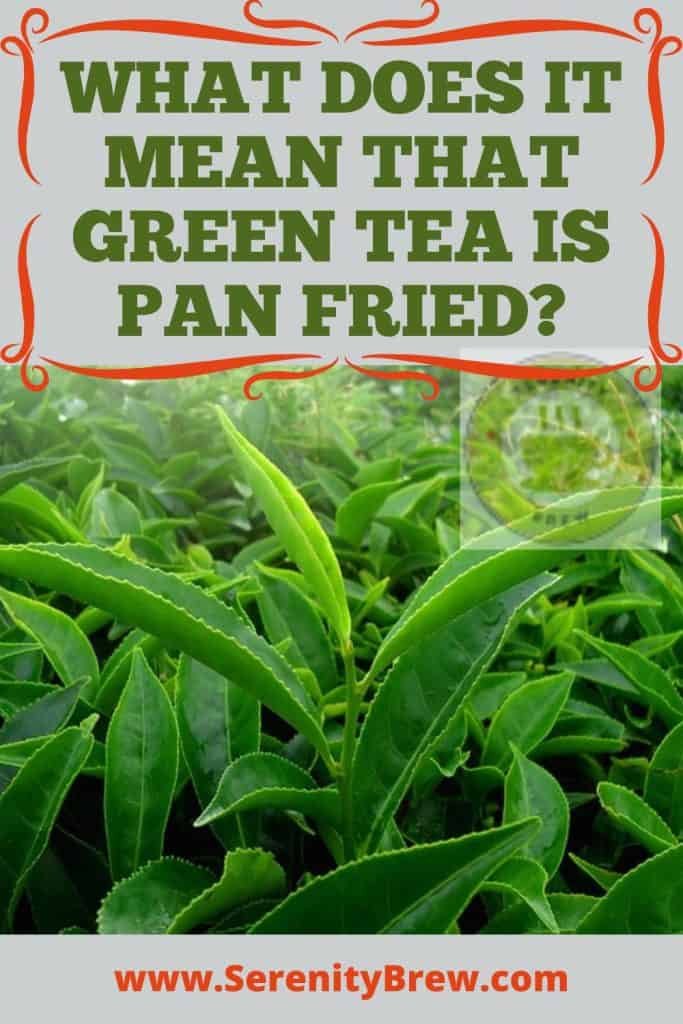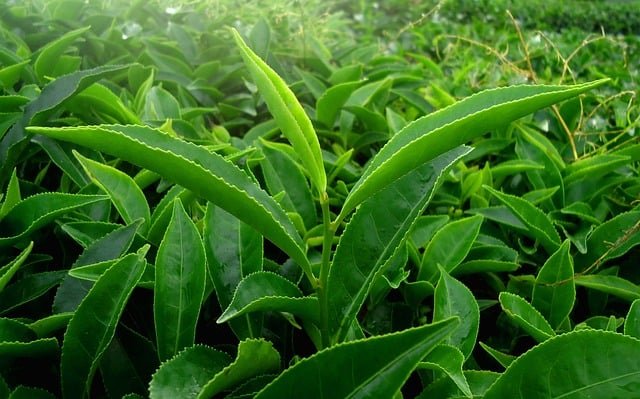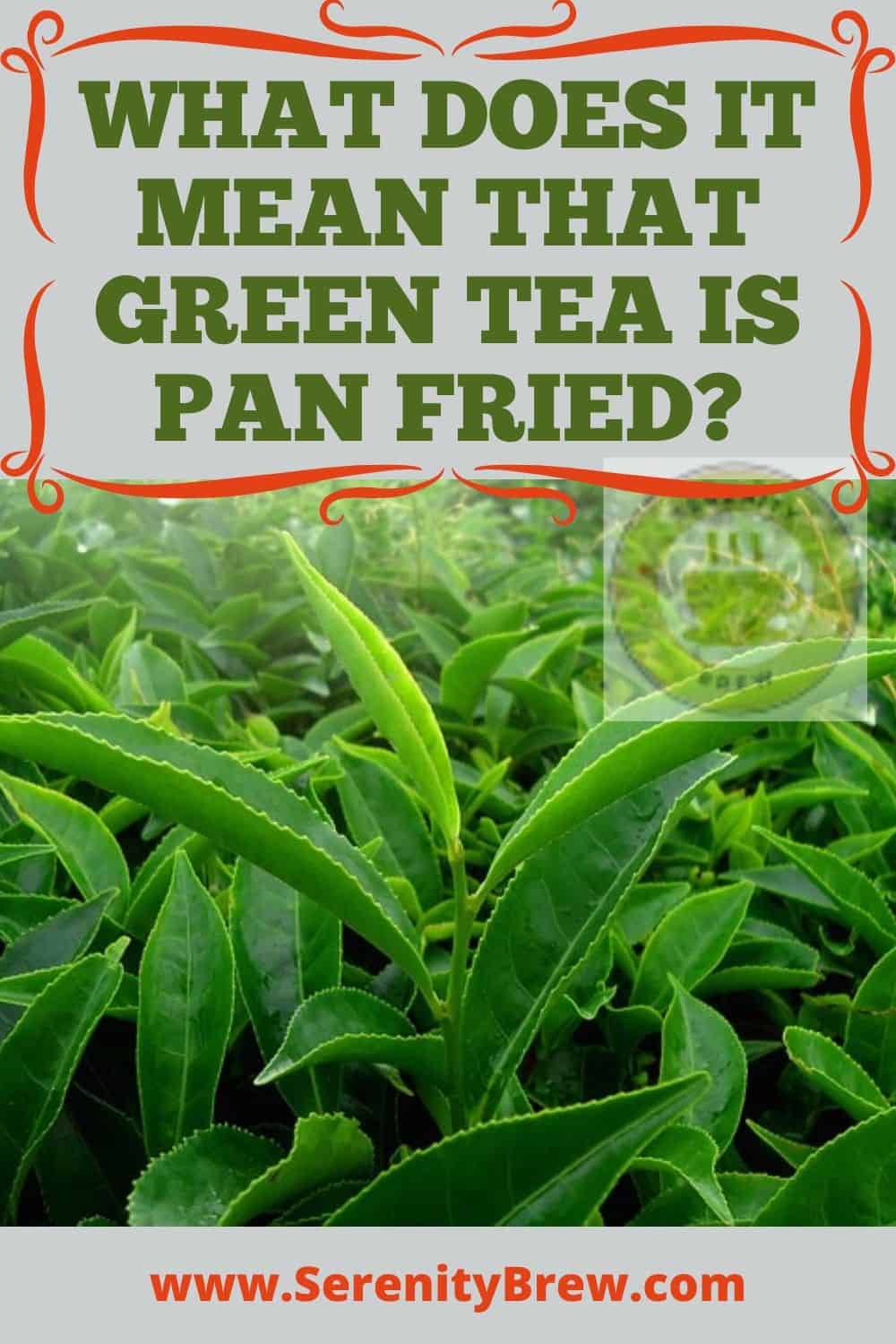What is Pan Fried Green Tea
A Comprehensive Guide to This Unique Brewing Method

Pan fried green tea has a different processing than industrial green tea (steamed). It is manually heated which ensures superior quality, a smoother and more persistent flavor and a sweeter aroma.
Origin of Pan-Fried Green Tea
In the history of pan-fried green tea, you will discover its origin in China, particularly during the Ming Dynasty (1368-1644). The Ming Dynasty marked a significant shift in tea processing methods, with a focus on preserving the natural taste and aroma of the tea leaves. Pan-frying became a popular technique for processing green tea during this period.
Before the Ming Dynasty, the most common method of processing tea was to steam the leaves and then press them into cakes. When you wanted to enjoy a cup of tea, you would break off a piece of the cake, crumble it, and steep it in hot water. However, this process sometimes resulted in a loss of freshness and flavor.
When pan-frying green tea was introduced, it brought several advantages to the tea-drinking experience. The technique involved heating the leaves in a dry wok or pan at high temperatures, causing the leaves to shrivel and become semi-dry. This process helped preserve the delicate flavors and health benefits of the tea leaves.
Furthermore, pan-frying green tea allowed for greater versatility in tea consumption. You could now enjoy green tea as loose leaves, which offered the opportunity to mix different types of tea leaves together, allowing for unique flavor combinations.
The adoption of pan-frying green tea during the Ming Dynasty coincided with an overall cultural shift towards subtler flavors and an appreciation for the natural qualities of the tea leaves. This new appreciation led to the development of various green tea varieties, including the famous Longjing (Dragon Well) tea.
In summary, the history of pan-fried green tea can be traced back to the Ming Dynasty, when a change in tea processing methods allowed for the preservation of the natural flavors and aromas of tea leaves. These innovations contributed to the rich tea culture that exists today in both China and around the world.
Chinese Pan-Fried Green Tea
Processing and Oxidation
Chinese green tea is known for its delicate flavors and low oxidation levels. To achieve this, the tea leaves are pan-fried shortly after being harvested. In this process, you’ll find that the heat helps to halt the natural oxidation reactions, preserving the fresh, green flavor that you love in your tea. Furthermore, the pan-frying process reduces any kind of bitterness, allowing more subtle notes to shine.
Quality and Aroma
The quality of Chinese pan-fried green tea is highly dependent on the skill of the tea master. Their ability to control the temperature and duration of the pan-frying process is crucial in achieving the desired flavors and aromas. A well-pan-fried green tea offers a vibrant, grassy, and sometimes sweet aroma that is both soothing and refreshing.
Drying and Aging
Following the pan-frying step, Chinese green tea undergoes a drying process, which can be done through sun-drying, oven-drying, or even air-drying.
Properly dried tea leaves should have a moisture content of around 5%, ensuring they can be stored without the risk of molding and maintain their quality over time. However, unlike fermented teas,
Chinese pan-fried green tea doesn’t typically undergo a significant aging process, as its fresh flavors and aromas are best enjoyed soon after production. So, for optimal taste, reach for those fresh and recently harvested leaves when brewing your next cup.
Japanese Pan-Fried Green Tea
Kama Method
In Japan, pan-fired green tea, known as Kamairicha (釜炒り茶), is produced using the Kama method. This traditional technique involves heating the tea leaves in a special pan, called a kama, to prevent oxidation. As you may know, this process helps retain the tea’s vibrant green color, fresh aroma, and unique flavor profile.
Sencha and Other Varieties
Japanese pan-fried green teas, including Kamairicha, are distinct from the more commonly known steamed green teas like Sencha. While steamed teas have a firmly established place in Japanese tea culture, pan-fried varieties offer a different experience with a richer, more robust taste. Kamairicha is often characterized by a smooth, slightly sweet flavor with a hint of roasted, nutty notes.
Ureshino and Kyushu Region
The Ureshino area, located in the Kyushu region of Japan, is famous for its high-quality Kamairicha production. This region’s unique climate, fertile soil, and traditional processing techniques contribute to the distinct character of its pan-fried green teas.
When you explore the world of Japanese green teas, be sure to try some of the exceptional Kamairicha offerings from the Ureshino and Kyushu areas
Comparison to Other Green Tea Types
Steaming vs Pan-Frying
When comparing pan-fried green tea to other types of green tea, such as steamed green tea or matcha, the primary difference lies in the processing method. While pan-fried green tea is made by heating the leaves in a pan or wok, steamed green tea involves steaming the leaves to prevent oxidation.
This difference in the production method results in distinct flavors, textures, and nutrient profiles. For example, you might find pan-fried green tea to have a more robust and nutty flavor compared to the subtle and fresh taste of steamed tea.
Oxidation and Fermentation
Understanding oxidation and fermentation is crucial in distinguishing pan-fried green tea from other types of tea, such as oolong and black tea.
Since green tea undergoes minimal oxidation, it retains its green color and fresh, vegetal flavors. In contrast, oolong tea experiences partial oxidation, yielding a diverse range of flavors and colors depending on the degree of oxidation.
At the other end of the spectrum, black tea is fully oxidized, resulting in its dark color and strong, bold flavors. It is worth noting that pan-fried green tea effectively maintains the low oxidation level characteristic of green tea through the pan-frying process.
How is green tea pan fried ?
In China, for many years, green tea was steamed, but nowadays, to ensure its quality, it is heated using the pan-fried system.
In Japan, tea processing methods are more industrial, so almost all are steamed. Only the very expensive and exclusive teas are pan fried , and they are produced in very limited quantities.
Pan fried processing requires more manual labor and time than steam processing, which is completely mechanical. That is why it makes the tea more expensive, but ensures more quality.
In the case of pan fried green tea , the leaves are roasted in an iron wok over high heat. Using several different hand movements, a skilled roaster is able to manipulate the sheets in many different ways.
It’s an incredible art form that neutralizes the grassy taste that characterizes steamed tea, while revealing the underlying aroma inherent to it.
Roasting appears to make the leaf tissue firmer, giving the tea a light greenish-yellow color with a slight reddish tinge.
How does Pan Fried Green Tea Taste

The flavor is lighter and more discreet, and one can drink cup after cup without tiring of this tea, which does not have the slightly bitter taste of steamed green tea. Interestingly, the aroma becomes stronger in the second infusion than in the first.
Depending on how your hands move in the iron wok and the temperature used, the three types of roasting are: long roast (Mei Cha), round roast (Zhu Cha or gunpowder green tea), and flat roast (Longjing tea, Dafang).
The pan-fried roasting process of green tea ensures that there is a higher amount of antioxidants and catechins, resulting in more health benefits.
While most green tea today is industrially steamed, the best Chinese green tea is still pan-fried , allowing roasters to adjust the tea-making process to optimize the quality of individual leaves. .
Try the exquisite pan fried green tea with Stevia, and discover a tea with a slightly smoky and roasted flavor, which does not leave a bitter taste in the mouth and with a sweeter aroma.

